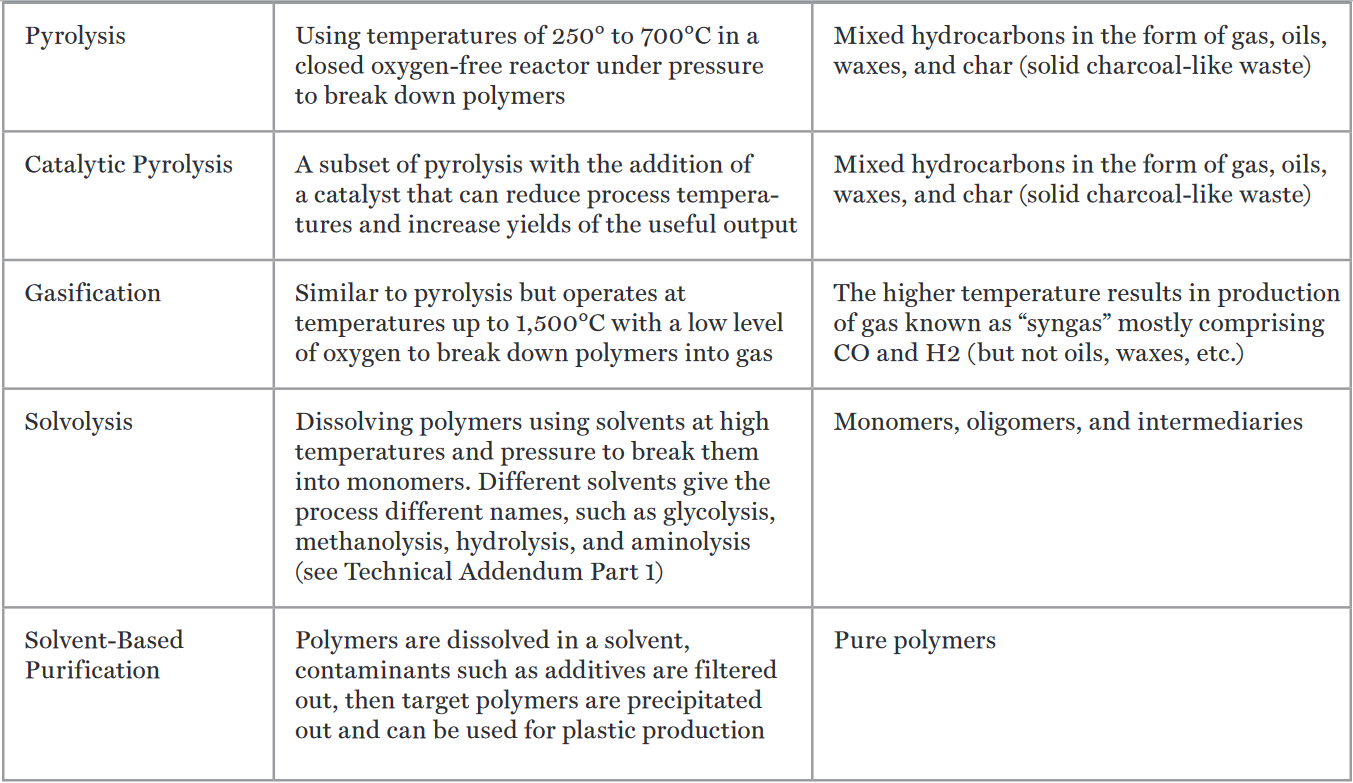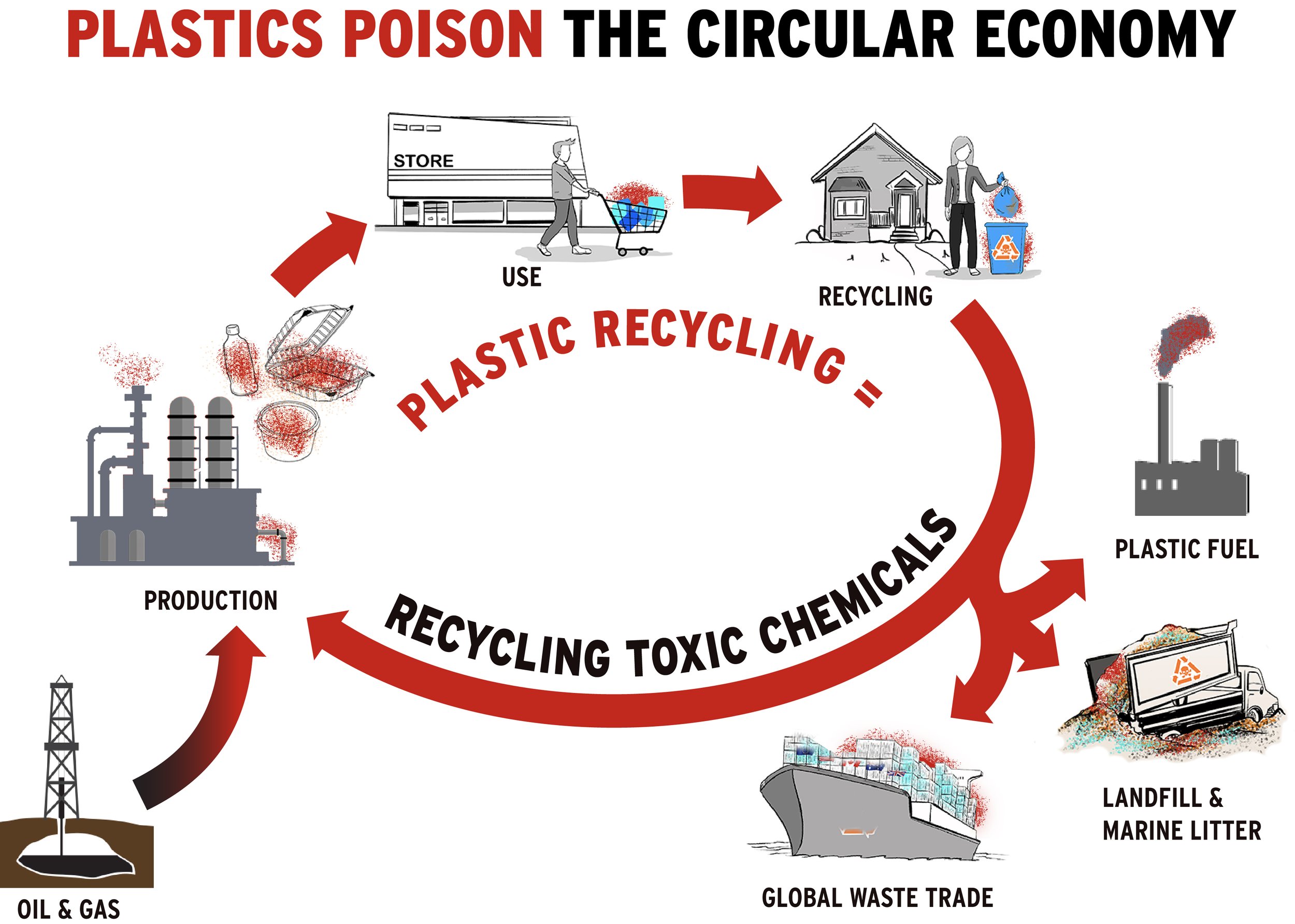Chemical Recycling: A Dangerous Deception
Why Chemical Recycling Won’t Solve the Plastic Pollution Problem
For more details, please read Chemical Recycling: A Dangerous Deception, published by Beyond Plastics and The International Pollutants Elimination Network (IPEN) in October 2023.
KEY FINDINGS
Of the 11 constructed facilities in the United States, most are not operating at full capacity.
Even at full capacity, the 11 facilities could process less than 1.3% of all U.S. plastic waste.
Expensive construction: up to half a billion dollars per facility, with significant public subsidies.
Minimal production of actual recycled plastic: Two of the 11 plants have a stated purpose of only making feedstock for plastic production. Three only make fuels, and six make a combination of fuels, chemicals, and plastic feedstocks.
Eight of the 11 plants are in environmental justice communities.
Some plants have experienced fires and explosions.
“Plastic contains many hazardous additives or polymers, recently estimated at more than 3,200 hazardous chemicals (UNEP 2023). In turn, they contaminate the plastic waste management processes (Takada and Bell 2021) and outputs while possibly exposing waste and recycling workers, as well as nearby communities.”
Constructed U.S. Chemical Recycling Plants, as of September 2023
CHEMICAL RECYCLING TECHNOLOGICAL PROCESSES
The chemical recycling processes of the 11 constructed plants* profiled in the report by Beyond Plastics and IPEN are as follows:
Eight plants use pyrolysis (Agilyx/Regenyx, Alterra Energy, Braven Environmental, Brightmark, Exxon Mobil, New Hope Energy, Nexus Circular, and Prima America).
Two plants use forms of gasification (Fulcrum and Eastman).
One plant uses solvents (PureCycle).
One plant uses solvolysis (Eastman).
*There are 11 plants but the list above totals 12 because Eastman has two separate processes.
HIGH CONSTRUCTION COSTS
Total project costs: at least $1.7 billion
Total subsidy value: at least $184 million
Private investment: at least $1.1 billion
NOT MEETING RATED PROCESSING CAPACITY
The combined rated annual capacity of the 11 plants is less than half a million tons of plastic waste, or less than 1.3% of the total U.S. plastic waste generated annually (36 million tons). Many of these plants are not operating at their rated capacities:
Two are still in test mode (Brightmark and Eastman).
Two are partially operating (New Hope and Nexus).
Two appear to be non-operational (Prima and PureCycle).
There is little to no publicly available information about the actual operational throughput for five of the facilities (Agilyx, Alterra, Braven, Exxon, and Fulcrum).
The recycling of plastics, whether, chemical or conventional, moves the many toxic chemicals used to make plastics around, harming our environment, threatening our health, and poisoning the circular economy.
GENERATION OF HAZARDOUS WASTE
The hazardous wastes produced by chemical recycling include polycyclic aromatic hydrocarbons (PAHs), dioxins and furans, persistent organic pollutants (POPs), volatile organic compounds (VOCs), and heavy metals.
Three of the 11 plants are classified by the U.S. Environmental Protection Agency as large-quantity generators of hazardous waste (Agilyx/Regenyx, Alterra, and Braven), while one is classified as a small-quantity generator (PureCycle).
A BURDEN TO ENVIRONMENTAL JUSTICE COMMUNITIES
Using the U.S. EPA’s Environmental Justice Tool:
Eight of the 11 plants are located in areas with lower-than-average income.
Five of the 11 plants are located in areas with higher-than-average concentrations of people of color.
Brightmark Energy facility in Ashley, Indiana. Source: The Last Beach Cleanup
MORE RESOURCES
MEMO: The Fraud of Advanced Recycling | Center for Climate Integrity | April 2024
ISSUE BRIEF: Recycling Lies: “Chemical Recycling” of Plastic Is Just Greenwashing Incineration | NRDC | February 2022
FACT SHEET: “Chemical Recycling” Is Not Recycling: The Plastic Industry Is Greenwashing Incineration | NRDC | September 2022
FACT SHEET: El “Reciclaje Químico” No Es Reciclaje: La Industria Del Plástico Hace Un “Lavado Verde” (Greenwashing) Acerca De La Incineración | NRDC | Septiembre 2022






